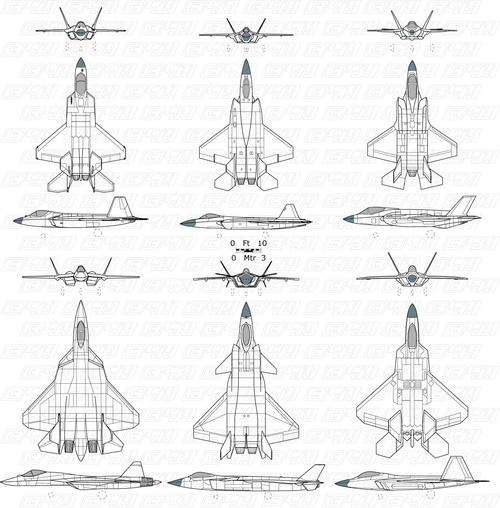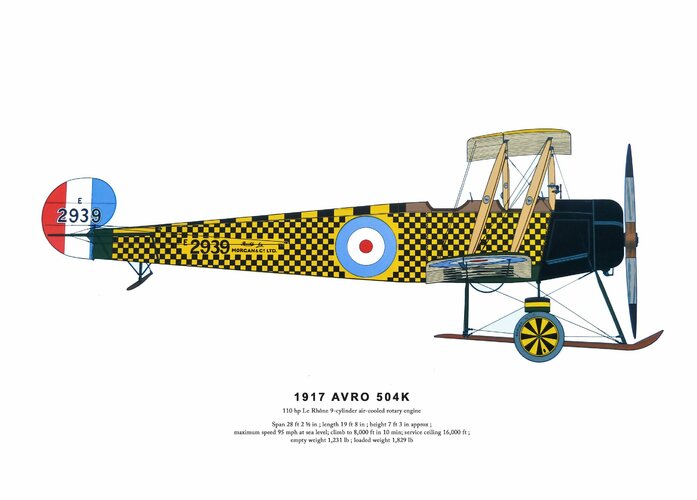No, the generations thing didn't come from Lockheed. Jesus, how many times do we need to rehash this?
You're right, they just came from weird Russian writings insipidly copied by Lockheed's marketing staff? What's the difference.
Do you want to source the claim that the Tomcat was a "4th generation aircraft" and find where it came from? Relying on hazy memory isn't a good look, but neither is relying on Western publications in the mid-1980's to be full of original thinking. They were not.
The '80's were a time when the West as a whole was busy copying Soviet thought on everything military. AirLand Battle was an Americanized version of Soviet operational thinking from Tuchachevsky's time, to replace the more realistic expectations forged in Vietnam, after all. Who's to say that "Tomcat is a 4th generation fighter" wasn't sourced from a Military Thought or Red Star monograph by COL V.P. Sidorovich, Red Army (he is a pseudonym of the collective psychic tulpa of the Red Army's General Staff, rest in peace), published in 1984 after all?
The indigenous American one published by R.P. Hallion is eight. I guess that number was too high for most generals and journalists to remember. There may be earlier ones, but I don't think anyone in the '80's was thinking in terms of "generations" of aircraft, rather they thought of aircraft as individual systems bringing unique and distinct capabilities, because the people in charge knew the combat systems somewhat intimately?
Generational thinking is just a thought mnemonic intended to teach average or slightly above average IQ conscript soldiers and officers how to think about weapon systems, without burdening their already overloaded brains with the merits and demerits of individual weapon systems of the enemy forces, by handily cherry picking certain factors. At least that was the case for considering the French AMX Leclerc to be more significant a departure than the American M1 tank.
You'd see it used in something like this:
"The map (figure 4.0) displays the dispositions of your platoon. The enemy (BLUE) possesses one 4th-generation main battle tank, supported by two batteries of 2nd-generation howitzers, a pair of 107-mm mortars, and a mechanized infantry platoon with 3rd-generation anti-tank missiles in a defensive position. We (RED) possess a company of T-80B supported by a regimental artillery group of a battery of 2S3 Acacia and two batteries of 2S1 Carnations, and a battery of Hailstorm multiple rocket launchers. Supporting the attack is a company of motor rifles and a platoon of assault sappers with flamethrowers. Discern the COFM differences between the two forces based on the diagrams 4.1a through 4.1c and find the result on the table (adapted from COL V.P. Sidorovich's
Generational Elements of Modern Weapon Systems, Red Star Vol. 60, Issue 25, June 1984.) on page 247 of your textbook. Then, determine the amount of munitions expended, the proper sequence of firing, and necessary replacement times of the gun batteries during movement to support the RED assault detachment in its attack on the BLUE defensive position based on the artillery indices section in the previous chapter. Nomograms will be provided. Show your work."
This isn't hard stuff or some super science, it's just obscure because a lot of people in the Western world weren't ready for treating military affairs like they treat aviation or civil engineering affairs.
It necessarily is going to lose nuance of stuff like Tomcat or F-4 because it's not intended for consumption by people who actually operate weapon systems or plan for their use. It's intended for consumption by, in the Soviet thought system, the lower level officers and NCOs who will never make it to the general staff or warrant officer rank but still need to know roughly what hierarchy a Leopard 1 sits at against a T-80. These are people who see "Leopard 1" and don't realize what it is, just that it has Leopard in its name, and they think the enemy has a very powerful tank called a Leopard, or possibly a Tiger or Panther or something, that could defeat the T-80.
When they learn that the Leopard 1 is a 2nd-generation main battle tank and the T-80 is a 3rd generation main battle tank, they lose their fear of the Leopard 1 and properly hierarchically rank the Leopard 1 as lower than the T-80. They may not even know what a Leopard 1 is or its name, just that this silhouette is correlated with 2nd-generation main battle tank, and that they need to identify it as such.
This is common stuff in armies that rely on large numbers of people because you're often getting average people who aren't very curious. It's not really a conscript-volunteer division so much as a subsuming-selective division. Whether Rolf Hilmes coined the generation of tanks or the Soviets did first, I don't know, but no one uses Hilmes's definitions so it probably wasn't very important, even if it might have been better.
The same would be true of aircraft presumably, and I suspect that generations of aircraft originated in the Soviet Union as a method of describing aspects of combat systems to air defense intercept controllers, who would otherwise need to memorize massive reams of information. Instead, they can memorize a chart perhaps with a dozen entries at most and consult their warrant officer if they need clarification.
1. High subsonic (1943-50): Me 262, Meteor, P-80, Vampire, Yak-15, MiG-9, Saab J-21, F-84 straightwing, F9F straightwing, Ouragan, Venom. Little aerodynamic difference from the last generation of propeller-driven fighters. First- and second-generation turbojets; wood, fabric, and all-metal construction; optical gunsights; straight wing and straight tail. Mechanical control systems. Primitive ejection seats. Mach 0.75-0.85.
2. Transonic (1947-55): F-86, F-84 sweptwing, F9F sweptwing, MiG-15/17, Hunter, Mystère TV. Second-generation turbojets; radar gunsights; swept wings; generally have adjustable horizontal stabilizers. Early hydromechanical flight control systems. Mach 0.90-1.05.
3. Early supersonic (1953-60): MiG-19, F-100, F-8. Swept wings, all-moving tails, radar gunsights, introduction of air-to-air missile armament. Third-generation turbojet engines. Early stability augmentation technology. Generally adaptable for both air-to-air and air-to-ground missions. Mach 1.3.
4. Supersonic (limited purpose) (1955-70): F-104, early model MiG-21, EE (BAC) Lightning, early model Mirage III. Supersonic aerodynamics, especially area ruling; fourth-generation turbojets; radar for search and fire control. Overreliance on -air-to-air missiles based on unrealistic expectations. Mach 2.0.
5. Supersonic (multirole) (1958-80): F-105, F-4, late-model MiG-21, late-model Mirage III, F-5, F-111, Mirage V, Su-24, MiG-23/27, Jaguar, Mirage Fl, Kfir. Refined supersonic aerodynamic design, including canards and variable geometry wings; fourth- and fifth-generation engines; stability augmentation; mixed-gun air-to-air missile (AAM) armament; terrain-following radar for low-level high-speed flight; radar search and fire control; infrared sensors; heads up displays (HUD); laser ranging and targeting; wide range of air-to-surface missiles, bombs, and rockets, including precision-guided munitions. Mach 1.4-2.5.
6. Supersonic multirole, high efficiency (1974-present): F-14, F-15, F-16, F-18, Mirage 2000, Tornado, MiG-29, Su-27. Combined the characteristics of the fifth-generation fighters with advances in propulsion, radar (multiple target track-while-scan, look-down/shoot-down), sensor, and electronic flight control technology to generate highly maneuverable, highly agile aircraft that can be swing-roled for air-to-air and air-to-ground missions. Fifth- or sixth-generation gas-turbine engines; engine thrust-to-weight ratios in excess of one; ability to attain supersonic speeds without afterburning; sustained high-G flight, and controllability below 70 knots at angles of attack exceeding 70 degrees. High degree of energy efficiency. Mix of cannonand missile armament, coupled with diverse air-to-ground weaponry. Mach 1.8-2.5.
Much easier. Should probably be cleaned up before being committed to the Air Defense Radar Operator's Handbook though.
So yes, paralay probably just made that list up on the spot. It's not terribly different from R.P. Hallion's jet aircraft generations, though, and any layman non-pilot could do the same, like R.P. Hallion did. Or whatever Russian guy came up with the four generations of jet aircraft.
tl;dr It doesn't really matter where Lockheed stole it from, "generational" stuff is a Sovietism, because relying on aviation almanacs is too slow or something for the typical ADIZ defender in the '80's. Whether it's the military grade school equivalent of knowing actual combat systems or a marketing term is irrelevant.
Ideally you keep some measure of relevance in being objective. Objective would be like R.P. Hallion's technological eras or the Soviet 1st through 5th generation tank scale (the Soviets peaked at 3rd gen). Subjective is that you usually just forget all that and define the entire scale by the last entry (your new airplane) like Lockheed's marketers did. It's not the difference between "arbitrary" and "not arbitrary" because, by definition, the entire list is going to be a collection of arbitrary divisions.
Complaining about it being arbitrary or a neologism misses the point of a generational scale by a country mile. It's a literal codex intended for non-experts and non-interested people to be able to do their jobs at the end of the day. This is the case for 70% of Soviet military thinking. The remaining 30% is actual stuff done by the General Staff to address the real world political-military problems of the Soviet and, later, formerly Soviet states.
The fact that Western generals and military leaders talk about generations of equipment in such exalted terms as they do today has
genuinely deadly and dire implications for the future of the American military. That's not a huge secret or anything, though.




